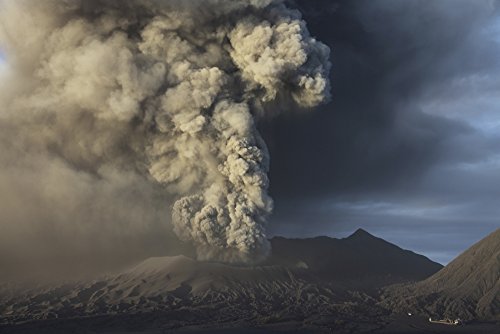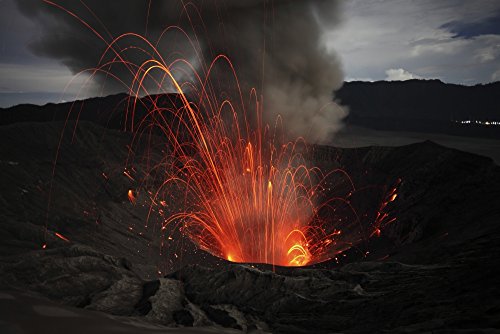Gigantic emissions of hot gasses and viscous flows of lava from volcanic eruptions have ironically cooled Earth and stalled global warming.
Despite continuing growth in atmospheric levels of greenhouse gases, and rising temperatures in the oceans, global-mean temperatures at the surface of the planet and in the troposphere (the lowest portion of the Earth's atmosphere) have shown relatively little warming since 1998.
Researchers at Lawrence Livermore National Laboratory believe this 'slow-down' or 'hiatus' is largely due to a series of volcanic eruptions in the early part of the 21st century.
Volcanic eruptions inject sulfur dioxide gas into the atmosphere. If the eruptions are large enough to add sulfur dioxide to the stratosphere (the atmospheric layer above the troposphere), the gas forms tiny droplets of sulfuric acid, also known as "volcanic aerosols."These droplets reflect some portion of the incoming sunlight back into space, cooling the Earth's surface and the lower atmosphere.
"In the last decade, the amount of volcanic aerosol in the stratosphere has increased, so more sunlight is being reflected back into space," says Lawrence Livermore climate scientist Benjamin Santer. "This has created a natural cooling of the planet and has partly offset the increase in surface and atmospheric temperatures due to human influence."
From 2000-2012, emissions of greenhouse gases into the atmosphere have increased -- as they have done since the Industrial Revolution. This human-induced change typically causes the troposphere to warm and the stratosphere to cool. In contrast, large volcanic eruptions cool the troposphere and warm the stratosphere.
The researchers report that early 21st century volcanic eruptions have contributed to this recent "warming hiatus," and that most climate models have not accurately accounted for this effect.
From 2000-2012, emissions of greenhouse gases into the atmosphere have increased -- as they have done since the Industrial Revolution. This human-induced change typically causes the troposphere to warm and the stratosphere to cool. In contrast, large volcanic eruptions cool the troposphere and warm the stratosphere.
"The recent slow-down in observed surface and tropospheric warming is a fascinating detective story," Santer said. "There is not a single culprit, as some scientists have claimed. Multiple factors are implicated. One is the temporary cooling effect of internal climate noise. Other factors are the external cooling influences of 21st century volcanic activity, an unusually low and long minimum in the last solar cycle, and an uptick in Chinese emissions of sulfur dioxide.
"The real scientific challenge is to obtain hard quantitative estimates of the contributions of each of these factors to the slow-down."
The researchers performed two different statistical tests to determine whether recent volcanic eruptions have cooling effects that can be distinguished from the intrinsic variability of the climate. The team found evidence for significant correlations between volcanic aerosol observations and satellite-based estimates of lower tropospheric temperatures as well as the sunlight reflected back to space by the aerosol particles.
"This is the most comprehensive observational evaluation of the role of volcanic activity on climate in the early part of the 21st century," said co-author Susan Solomon, professor of atmospheric chemistry and climate science at MIT. "We assess the contributions of volcanoes on temperatures in the troposphere - the lowest layer of the atmosphere -- and find they've certainly played some role in keeping the Earth cooler."

